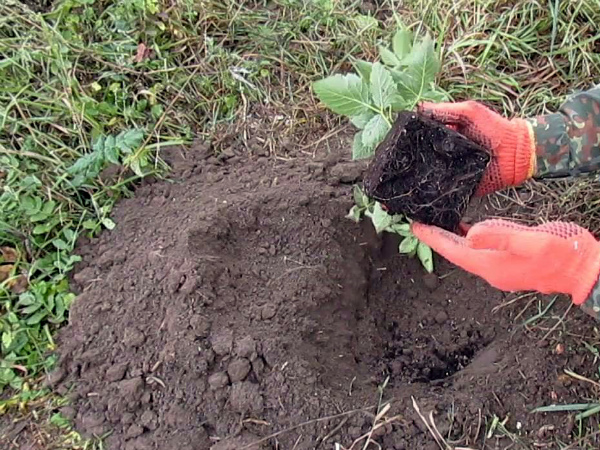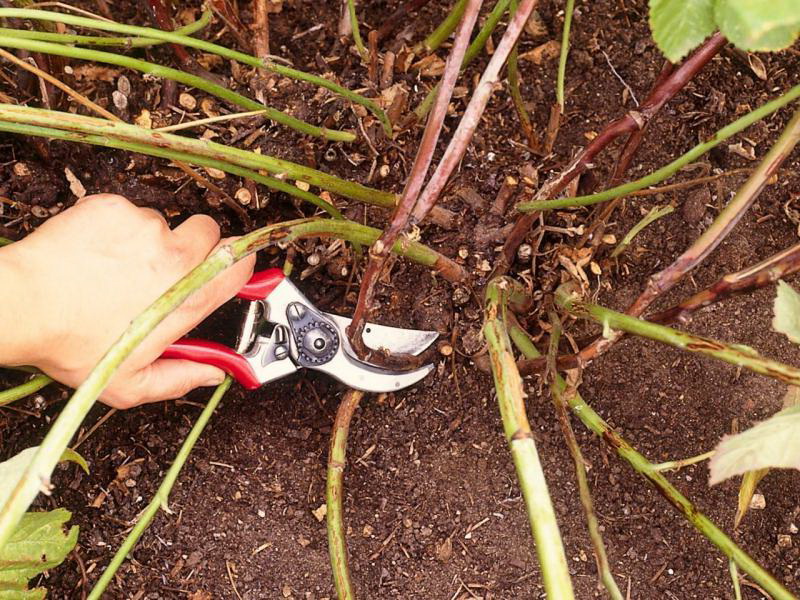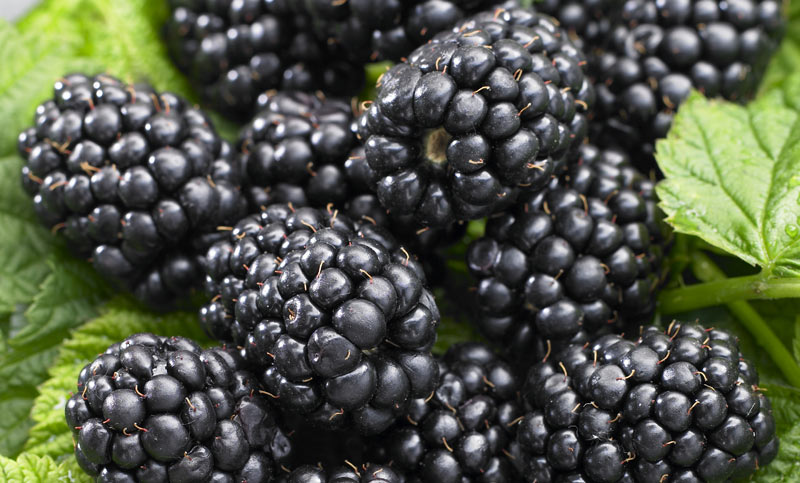A healthy and well-groomed plant easily tolerates winter, yields high and sustainable crops. To increase fruiting at the end of the season, a set of measures is applied to improve growing conditions, including pruning of branches, garter and shelter of the crop for the winter. If you cut the blackberries correctly in the fall, the bush will form faster in the spring, during the summer it will become lush, young strong shoots will appear, large berries will be tied.
Content
Why autumn pruning is needed
Blackberry is a plant with a biennial fruiting cycle. In the first year, culture develops and forms strong shoots. The buds that appear appear to be cut so that they do not draw nutrients from the stems.
In the second season, the branches turn stiff, flower buds appear, and a shrub gives a crop of sweet black berries. To stimulate flowering next summer, you need to cut the blackberry for the winter. If this is not done, in the third year the fruits will not be tied.
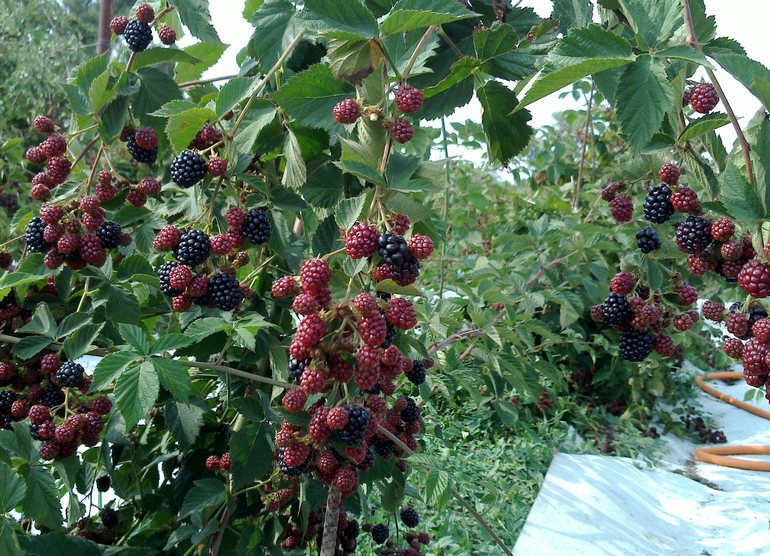
Pruning promotes plant rejuvenation and active shoot formation. Pinching the apex in the first year stimulates the growth of lateral processes. Removing old branches and dry tips allows young shoots to mature and grow faster. Last year’s stems cannot be left, even if they are lush and strong. They will interfere with the normal movement of air, as a result of which the bush will weaken, mold and rot will appear. Such a plant can die before spring or recover for a long time after wintering.
Pruning is also carried out to thin out overly thickened bushes. All types of blackberry are photophilous, do not tolerate slight shading. Excessive bushiness prevents the penetration of sunlight to the middle of the plant, complicates the harvest. In the summer, with a lack of lighting, the berries grow sour and small, young branches slow down in growth and do not have time to ripen. In the autumn, long stems are harder to cover to protect from the cold, so lush shrubs are less frost-resistant.
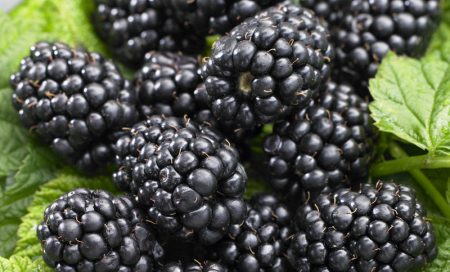 You may be interested in:
You may be interested in: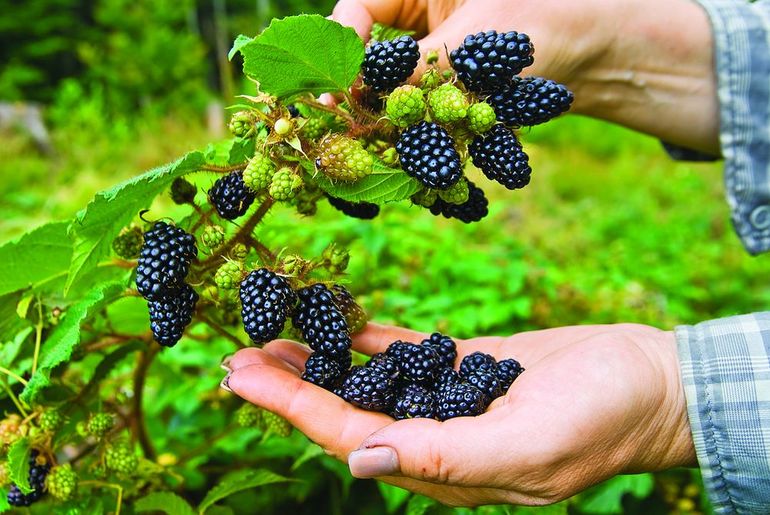
Turnaround time
Cutting blackberries in the fall for beginners is a rather time-consuming process, since when forming a bush you need to divide the branches into age parts (annual, biennial), and the presence of thorns complicates the work. Trimming and placing lashes can take more than one day.
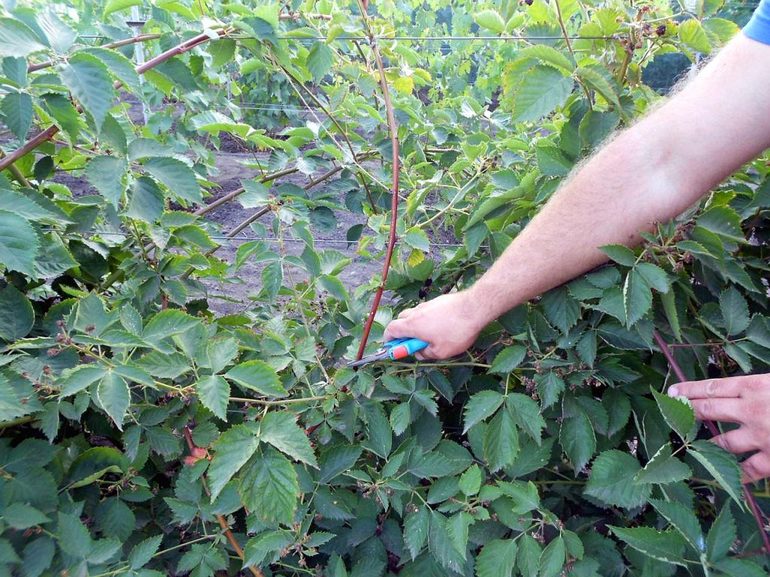
Autumn pruning is performed from August 30 to the end of October. Gardeners with no experience should start shortening the lashes immediately after fruiting. It is important to finish the work a month before the onset of frost in order to conduct pre-winter feeding, and a sufficient amount of sunlight will help the plant recover, accumulate nutrients and strengthen.
Bushes Tools
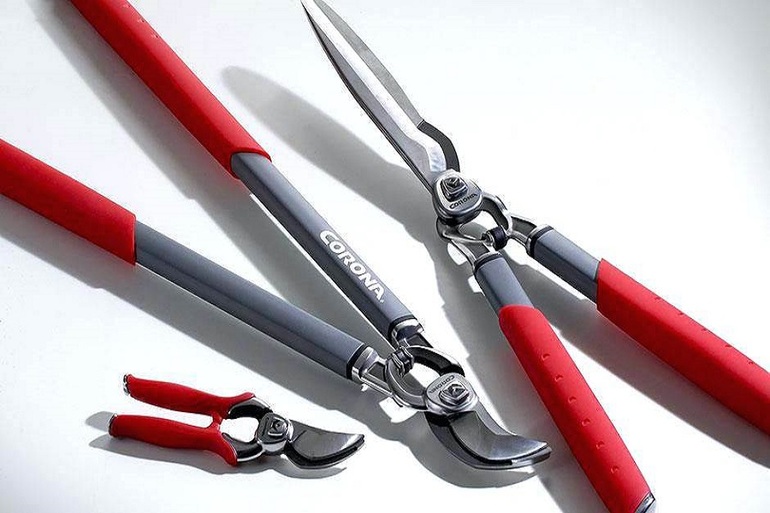
For work, it is necessary to prepare a delimber and pruner. If the diameter of lignified shoots exceeds 1.5 cm, a garden saw is used.
Blackberry shrubs are pruned. clean and sharp tool. Sharp blades make the process easier and faster.The special sharpening of the teeth on the saw and the special wiring angle allow cutting branches in two directions. After working with the tool, smooth and smooth edges remain, which looks more neat. This treatment reduces the risk of shrub infection.
For stems less than 1.5 cm thick, a secateurs are used. The device should not break, chew and split branches, leave uneven sections. If this happens, select a tool with a minimum clearance between the blades. The pruning shears are suitable for prickly shrubs. When cutting, the tool is constantly held at one angle so as not to break the stem.
The formation and placement of lashes
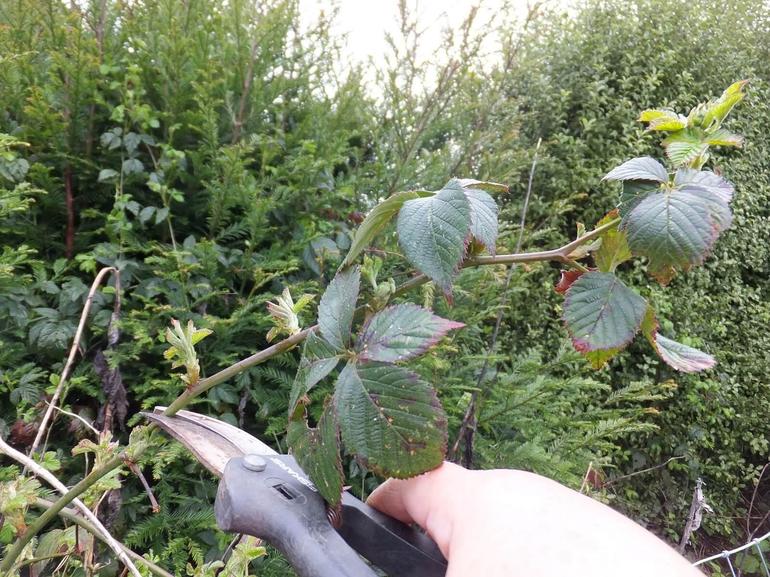
There are blackberry bushes with creeping and erect stems, studless varieties and with numerous straight or curved spikes. As the berry shrubs grow and develop, young lashes are tied to a support. Blackberry bushes should not grow in a free direction.
Without garter, long young and old stems intertwine, which complicates the work when forming a bush. On creeping varieties that are located on the ground, the lashes will take root quickly, and the berries will rot. The use of special trellises facilitates pruning and harvesting.
There are two methods of forming a bush:
- Fan (vertical) method is used for straight species. The stems of the plant are fixed on a support in the form of a fan. Last year’s branches are tied vertically, young shoots are arranged horizontally on the sides. After harvesting, the ribs of the fans are trimmed above the ground. The central old branches are removed at the root, new shoots are collected in a bundle, shortened to a height of 1.5 m and loosely fixed on the trellis.
- The rope (horizontal) method is suitable for the formation of clinging and creeping species. Long flexible stems are wound in a spiral on a support on one side, growing shoots are similarly fixed on the other side. With this method of garter, the harvest will alternate every year. In autumn, the scorched lashes, weak and damaged young shoots are completely cut off.
Crop care
Caring for fruiting bushes in mid-autumn helps the plant grow stronger, keep as many shoots as possible for the next season and lay fruit buds on young shoots.
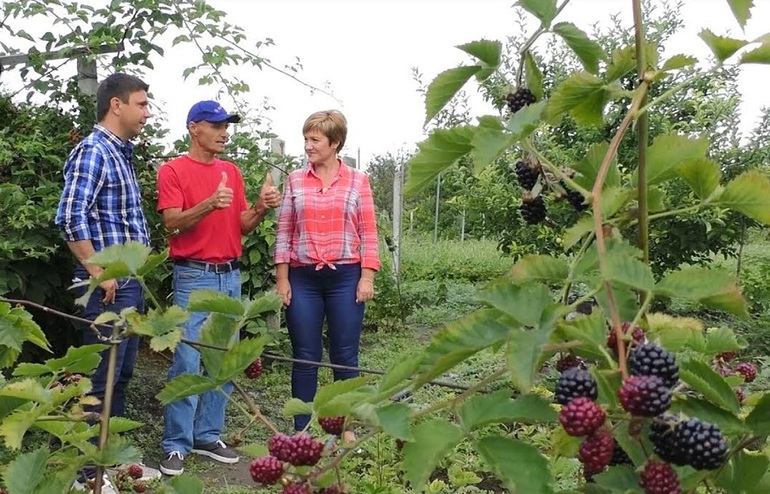
Blackberry Care in the Fall:
- pruning
- top dressing;
- shelter.
Pruning rules
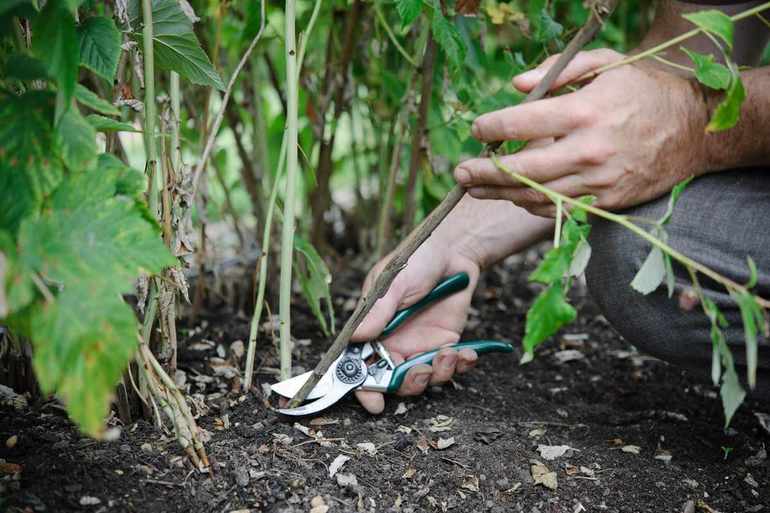
The design and complexity of the work depends on the age of the branches, variety and type of culture. Growing bushes form a large number of shoots from the underground. Trimming the apex promotes the growth of lateral stems, on which flower buds are tied, and the fruits ripen.
Creeping strongly branched species do not form root shoots, but form numerous lateral fruit shoots. Over the summer, vines longer than 10 m are densely intertwined, creating difficulties in caring for the plant.
Before pruning, the plant is inspected, the state of the shoot is determined. Healthy lashes of brown color, shiny, easily bend, do not break. At the stage of formation of the bush, intertwined stems are separated, fruit-bearing branches are separated from young ones. Creeping varieties are removed from the trellis and laid on the ground. For the winter leave 5-10 strong shoots. They are marked with cloth tape so as not to accidentally cut off.
How to prune blackberries for the winter:
- Using secateurs, the prolific branches are completely removed. They are cut off at the root, without leaving tips on the surface of the soil.
- Broken young twigs, thin, too short, damaged and infected shoots are cut.
- In repairing varieties, all branches are cut below ground level.
- For the formation of lateral shoots, annual stems are pinched immediately above the buds, straight varieties at a height of 2 m, creeping - 3 m.
- When thinning bushes of straight-growing varieties leave 4-7 strong shoots and 8-10 on creeping species. The distance between the shoots should be 8-10 cm.
- Matured young stems are cut into ¼ part, collected in a bunch, fixed on the ground or low support.
- The stems that will winter without shelter are shortened to the same height - from 1.5 to 1.8 m.
Pre-winter watering and top dressing
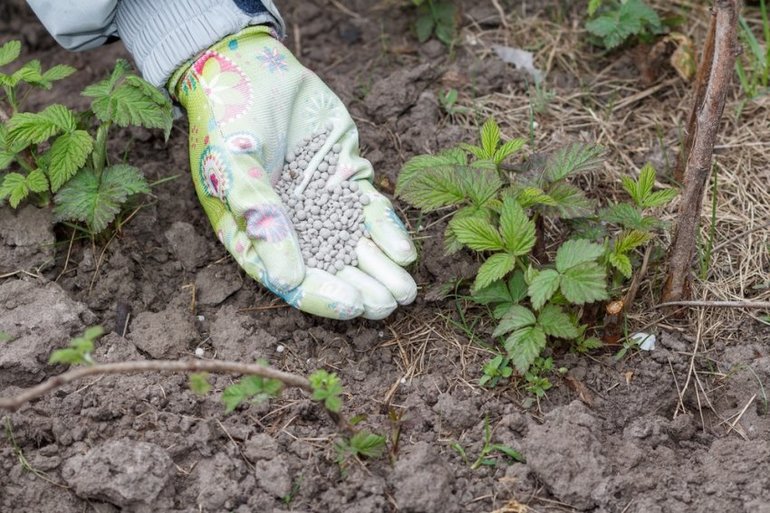
After removal of the shoots, the blackberries are fed with potash and phosphorus fertilizers. Under each bush, compost is added with the addition of superphosphate. Carefully digging the soil under the bushes of a shipless blackberry. If the root system is damaged, siblings with thorns may appear on some varieties.
If the autumn is warm and without rain, before shelter, the blackberries are abundantly watered. At least 20 liters of water are poured under each bush. The soil will retain high humidity, the root system will continue to grow and the plant will not weaken by winter.
To protect the blackberry bush from pests hiding in the soil for the winter, copper sulfate or a 3% solution of hydrogen peroxide is used. The aerial part of the plant is sprayed with liquid, the soil is disinfected. For blackberry roots, peroxide serves as a useful fertilizer, enriching them with oxygen.
Shrub shelter
Cultivars are less resistant to severe frosts than shrubs in the forest. Blackberries well grown and brought from the northern regions are well tolerated in winter. Creeping species withstand temperatures down to -16 ° C, upright species - up to -20 ° C. Before shelter from under the bushes, the fallen leaves are raked, the beds are mulched with dry humus. Blackberry stalks are bent to the ground, laid in a trench on a prepared bedding, fixed with hooks to the soil or metal arches. Litter is laid out from needles, grassy section, thin branches, bark.
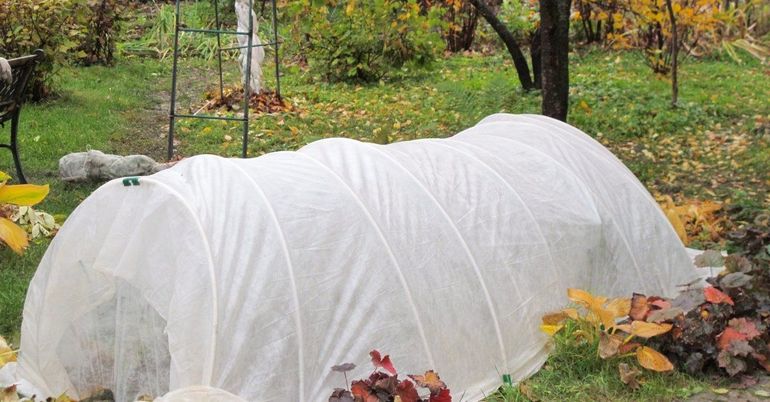
Creeping species easily bend and fold into a circle, and upright branches do not lend themselves to sharp bends and can be broken. In order not to damage the plant, after trimming, the cargo is secured on the tops of the stems. Under the weight, the branches will gradually bend down and fall to the ground. They are tied with twine, treated with copper sulfate, pressed on top of the boards.
For the upper shelter, agrofibre or organic insulation is used (corn, straw, wood shavings, reeds, leaves, grass). The film as the main shelter is not suitable. It is spread with an additional top layer on the insulating material to protect it from moisture. Organic insulation retains heat well, but in spring, ripe and moist plants are difficult to get out of prickly shrubs.In winter, wet foliage attracts rodents that harm young blackberry stems. To do this, in the middle of the bush place seed from pests. Insulation from pine needles, spruce and pine branches does not allow pests to start. Lapnik is laid on the plant together with a film or agrofiber.
Bearless varieties are covered with siderates, for the winter - with peat and 4-5 layers of dense spunbond. The nonwoven material is dripped or pressed with long boards.
The future harvest depends on the autumn garden work. Timely care of blackberries and control of shoot growth allows next year to collect from 1.2 to 1.6 kg of delicious and medicinal berries from each bush.

